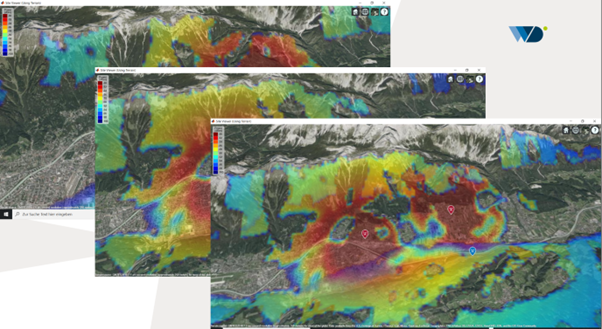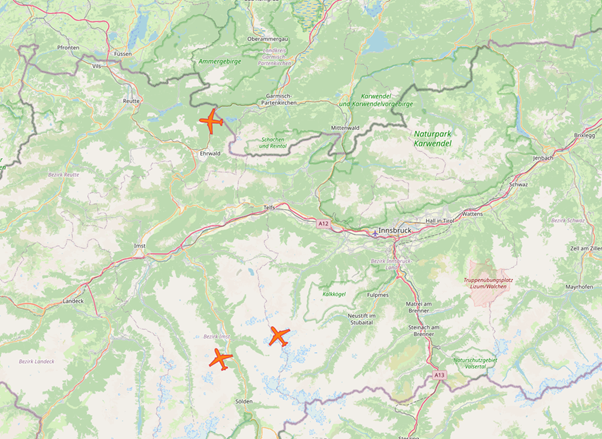Detection of cooperative drones in the course of „Save Aviation Tyrol“
By airlabs
17. May 2022
Project number: 6.604.30001 & 6.605.30001 (Test flights for „SafeAviationTyrol“)
Involved cooperation partners:
World-Direct eBusiness solutions GmbH
Twins GmbH
AIRlabs Austria GmbH
Project description/methods:
The project “SafeAviationTyrol” deals with practicable and quickly applicable solutions for the safety issues associated with drones. These include:
a) the localisation of drones and aircraft close to the ground,
b) the avoidance of collisions with civil aviation, and
c) secure high-speed radio data links.
The aim of the research project is to contribute to the security of airspace, especially with regard to cooperative and uncooperative drones.
In the course of this research project, several flights will be carried out at different airfields. During the flights, various detect & avoid mechanisms are tested (e.g. detection of ADS-B/FLARM signals and uncooperative drones using ground antennas). In addition, the performance limits of the individual components will be tested in different terrain and the antennas will be tested on the basis of topographical differences & lessons learned, e.g. on antenna placement.
The flights are carried out in 3 complexity steps, each taking 2 flight days. The airfields are provided by the company twins GmbH via AIRlabs.
1st test stage on 2ha airfield with simple topography: Basic technical test in the “open” category.
2nd test level on 5ha airfield with difficult topography: antenna test & application of lessons learned, flights only in the “open” category.
3rd test stage on 5ha airfield with difficult topography: validation of results & application of lessons learned, flights only in the “open” category.
Results/Dissemination:
It was proven that with the chosen architecture, cooperative UAVs emitting the protocols FLARM or ADS-B can be detected in the near-ground space.
It was proven that with the open and modular architecture, the detection of cooperative UAVs is possible and that other protocols (e.g. OpengliderNetwork, LORA) could also be integrated.
Range measurements were carried out under different environmental conditions in the field and theoretical deployment models for area monitoring were developed in combination with shielding calculations.
Application scenarios were identified through discussions with potential users, thus defining the direction for further development/research.
Associated research project (+consortium):
SafeAviationTyrol (Austro Control GmbH, ÖAMTC Christophorus Flugrettungsverein, A1 Telekom Group, World Direct GmbH, Institute of Microelectronics Leopold Franzens University Innsbruck, MCI Management Center Innsbruck, twins GmbH)




